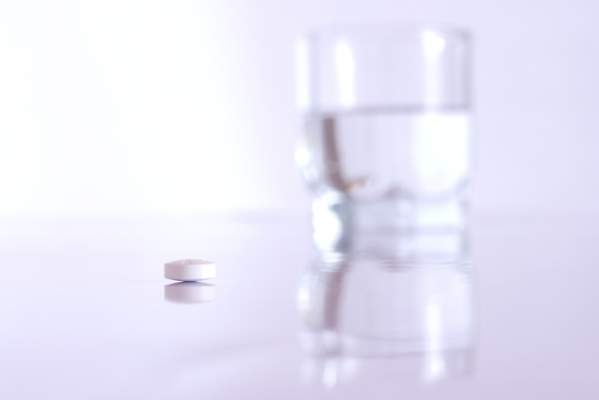User login
LISBON – Melatonin supplementation during ovarian stimulation improved oocyte and embryo quality but not clinical pregnancy rates in older women undergoing in vitro fertilization in a double-blind, randomized trial.
“In clinical pregnancy, we did not find a statistical difference, even if we can see a higher proportion of pregnant patients,”said Dr. Arianna Pacchiarotti, director of the IVF Center Praxi Provita, Rome.
Melatonin is secreted by the pineal gland and declines in middle age after peaking in early childhood. The powerful free-radical scavenger and antioxidant has been shown to protect the testis and ovary from oxidative stress, stimulates the secretion of progesterone, and inhibits the synthesis of prostaglandins, she said.
In a recent study, fertilization rates nearly doubled, and the rate of good quality embryos increased from 48% to 65.6% following at least 2 weeks of oral melatonin 3 mg/day in all women undergoing in vitro fertilization (Gynecol. Endocrinol. 2014;30:359-62).
The current study involved 358 women, aged 38-42 years, who were undergoing their first IVF treatment comprised of a short down regulation protocol with a gonadotropin-releasing hormone analogue and combined stimulation with urinary and recombinant follicle stimulating hormone. Patients were randomly assigned in a double-blind fashion to 4 mg of melatonin 1 month before starting stimulation or no pretreatment.
The 165 evaluable patients treated with melatonin and the 166 evaluable controls were similar in age, body mass index, cycle length, duration of sterility, or primary and secondary sterility.
Following supplementation, the melatonin group had significantly higher progesterone concentration in follicular fluid than did controls (10.4 ng/mL vs. 4.3 ng/mL; P = .001), more mature oocytes (48.2% vs. 35%; P = .008), and more grade 1 embryos (45.7% vs. 30.4%; P = .0045), Dr. Pacchiarotti reported at the annual meeting of the European Society of Human Reproduction and Embryology.
The study also demonstrated a significant reduction of oxygen free radicals in the melatonin group (190 Carratelli units vs. 388 CARR U; P = .014) and therefore higher concentrations of intrafollicular melatonin (213 pg/mL vs. 69 pg/mL; P = .0013), she said.
Antioxidative capacity was also significantly higher with melatonin supplementation (1.76 vs. 0.89; P = 018).
“This hypothesizes an important scavenger role of melatonin, which results in better oocyte and embryo quality in aged women and IVF outcome,” Dr. Pacchiarotti concluded.
No significant differences were observed between the melatonin group and controls in endometrial thickness on the day of human chorionic gonadotropin administration (10.8 mm vs. 11.2 mm), total oocytes retrieved (5.1 vs. 5.2), implantation rates (13.8% vs. 12.2%), abortion rates (10.8% vs. 8.6%), and twin pregnancies (20.8% vs. 20%).
Audience members questioned how the investigators arrived at the melatonin dose and whether the study was underpowered to identify an effect of melatonin on pregnancy. A prior study evaluating melatonin 2 mg showed no difference in outcomes, while a 5-mg dose has been shown to be effective in cancer prevention, Dr. Pacchiarotti said. The study had 80% power to detect a 20% difference with 50 evaluable patients per group.
LISBON – Melatonin supplementation during ovarian stimulation improved oocyte and embryo quality but not clinical pregnancy rates in older women undergoing in vitro fertilization in a double-blind, randomized trial.
“In clinical pregnancy, we did not find a statistical difference, even if we can see a higher proportion of pregnant patients,”said Dr. Arianna Pacchiarotti, director of the IVF Center Praxi Provita, Rome.
Melatonin is secreted by the pineal gland and declines in middle age after peaking in early childhood. The powerful free-radical scavenger and antioxidant has been shown to protect the testis and ovary from oxidative stress, stimulates the secretion of progesterone, and inhibits the synthesis of prostaglandins, she said.
In a recent study, fertilization rates nearly doubled, and the rate of good quality embryos increased from 48% to 65.6% following at least 2 weeks of oral melatonin 3 mg/day in all women undergoing in vitro fertilization (Gynecol. Endocrinol. 2014;30:359-62).
The current study involved 358 women, aged 38-42 years, who were undergoing their first IVF treatment comprised of a short down regulation protocol with a gonadotropin-releasing hormone analogue and combined stimulation with urinary and recombinant follicle stimulating hormone. Patients were randomly assigned in a double-blind fashion to 4 mg of melatonin 1 month before starting stimulation or no pretreatment.
The 165 evaluable patients treated with melatonin and the 166 evaluable controls were similar in age, body mass index, cycle length, duration of sterility, or primary and secondary sterility.
Following supplementation, the melatonin group had significantly higher progesterone concentration in follicular fluid than did controls (10.4 ng/mL vs. 4.3 ng/mL; P = .001), more mature oocytes (48.2% vs. 35%; P = .008), and more grade 1 embryos (45.7% vs. 30.4%; P = .0045), Dr. Pacchiarotti reported at the annual meeting of the European Society of Human Reproduction and Embryology.
The study also demonstrated a significant reduction of oxygen free radicals in the melatonin group (190 Carratelli units vs. 388 CARR U; P = .014) and therefore higher concentrations of intrafollicular melatonin (213 pg/mL vs. 69 pg/mL; P = .0013), she said.
Antioxidative capacity was also significantly higher with melatonin supplementation (1.76 vs. 0.89; P = 018).
“This hypothesizes an important scavenger role of melatonin, which results in better oocyte and embryo quality in aged women and IVF outcome,” Dr. Pacchiarotti concluded.
No significant differences were observed between the melatonin group and controls in endometrial thickness on the day of human chorionic gonadotropin administration (10.8 mm vs. 11.2 mm), total oocytes retrieved (5.1 vs. 5.2), implantation rates (13.8% vs. 12.2%), abortion rates (10.8% vs. 8.6%), and twin pregnancies (20.8% vs. 20%).
Audience members questioned how the investigators arrived at the melatonin dose and whether the study was underpowered to identify an effect of melatonin on pregnancy. A prior study evaluating melatonin 2 mg showed no difference in outcomes, while a 5-mg dose has been shown to be effective in cancer prevention, Dr. Pacchiarotti said. The study had 80% power to detect a 20% difference with 50 evaluable patients per group.
LISBON – Melatonin supplementation during ovarian stimulation improved oocyte and embryo quality but not clinical pregnancy rates in older women undergoing in vitro fertilization in a double-blind, randomized trial.
“In clinical pregnancy, we did not find a statistical difference, even if we can see a higher proportion of pregnant patients,”said Dr. Arianna Pacchiarotti, director of the IVF Center Praxi Provita, Rome.
Melatonin is secreted by the pineal gland and declines in middle age after peaking in early childhood. The powerful free-radical scavenger and antioxidant has been shown to protect the testis and ovary from oxidative stress, stimulates the secretion of progesterone, and inhibits the synthesis of prostaglandins, she said.
In a recent study, fertilization rates nearly doubled, and the rate of good quality embryos increased from 48% to 65.6% following at least 2 weeks of oral melatonin 3 mg/day in all women undergoing in vitro fertilization (Gynecol. Endocrinol. 2014;30:359-62).
The current study involved 358 women, aged 38-42 years, who were undergoing their first IVF treatment comprised of a short down regulation protocol with a gonadotropin-releasing hormone analogue and combined stimulation with urinary and recombinant follicle stimulating hormone. Patients were randomly assigned in a double-blind fashion to 4 mg of melatonin 1 month before starting stimulation or no pretreatment.
The 165 evaluable patients treated with melatonin and the 166 evaluable controls were similar in age, body mass index, cycle length, duration of sterility, or primary and secondary sterility.
Following supplementation, the melatonin group had significantly higher progesterone concentration in follicular fluid than did controls (10.4 ng/mL vs. 4.3 ng/mL; P = .001), more mature oocytes (48.2% vs. 35%; P = .008), and more grade 1 embryos (45.7% vs. 30.4%; P = .0045), Dr. Pacchiarotti reported at the annual meeting of the European Society of Human Reproduction and Embryology.
The study also demonstrated a significant reduction of oxygen free radicals in the melatonin group (190 Carratelli units vs. 388 CARR U; P = .014) and therefore higher concentrations of intrafollicular melatonin (213 pg/mL vs. 69 pg/mL; P = .0013), she said.
Antioxidative capacity was also significantly higher with melatonin supplementation (1.76 vs. 0.89; P = 018).
“This hypothesizes an important scavenger role of melatonin, which results in better oocyte and embryo quality in aged women and IVF outcome,” Dr. Pacchiarotti concluded.
No significant differences were observed between the melatonin group and controls in endometrial thickness on the day of human chorionic gonadotropin administration (10.8 mm vs. 11.2 mm), total oocytes retrieved (5.1 vs. 5.2), implantation rates (13.8% vs. 12.2%), abortion rates (10.8% vs. 8.6%), and twin pregnancies (20.8% vs. 20%).
Audience members questioned how the investigators arrived at the melatonin dose and whether the study was underpowered to identify an effect of melatonin on pregnancy. A prior study evaluating melatonin 2 mg showed no difference in outcomes, while a 5-mg dose has been shown to be effective in cancer prevention, Dr. Pacchiarotti said. The study had 80% power to detect a 20% difference with 50 evaluable patients per group.
AT ESHRE 2015
Key clinical point: Treatment with melatonin improved oocyte and embryo quality and promoted elimination of oxygen free radicals, but did not increase pregnancy rates in older IVF patients.
Major finding: Patients receiving melatonin has more mature oocytes (48.2% vs. 35%) and more grade 1 embryos (45.7% vs. 30.4%).
Data source: Double-blind, prospective randomized trial in 358 patients aged more than 37 years.
Disclosures: Praxi DS and Praxi Provita funded the study. Dr. Pacchiarotti is an employee of Praxi Provita.

